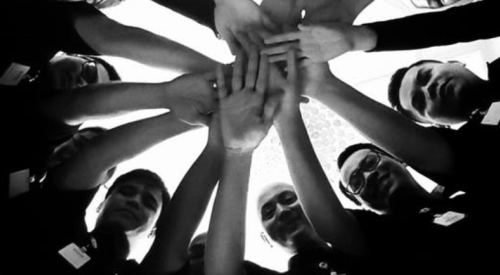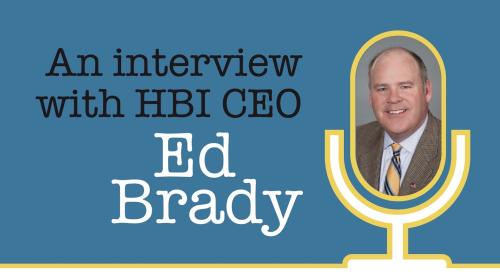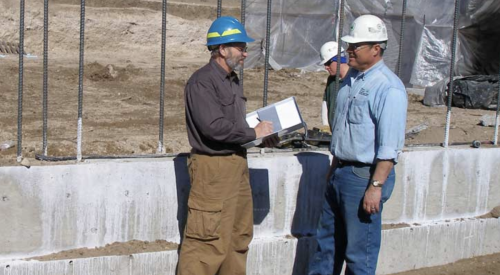|
Home building is a unique business. Consider the assets most other producers list on their balance sheets: physical facilities, manufacturing equipment, warehouses, etc. Now do the same exercise for most home builders. There is no physical facility beyond an office and a job trailer. There is no manufacturing equipment except for a few tools. There isn’t much in the way of warehouse space either.
The greatest asset in most home building companies is the people who work there. Sadly, this is the one asset to which our industry devotes very few dollars to developing skills and growing value to the organization and to the customer.
“We exist in an industry where the turnover rate averages 30% to 40%,” says David Weekley, chairman and CEO of David Weekley Homes. “Our challenge as a company was to figure out how to beat that reality.”
This Houston-based home builder attacks this issue in multiple ways:
1) Selection: In the hiring process, the company casts a big net for recruits and puts candidates through a much finer strainer. “We focus less on their current experience and more on their learning capacity and their innate drive and intelligence.”
2) Manager involvement: Rather than rely on a human resources manager to screen and hire new associates, Weekely Homes pushes that responsibility down to the position’s direct manager. “When a manager gets to know an interviewee, makes the decision to bring that individual onto the team and then must rely on his or her talents to get the job done, there is a much closer tie,” explains Weekley. That manager also knows much better than an HR professional the requirements of the job and the skills, personality and temperament that will contribute to success.
“These two things must come first,” adds Weekley, “because if you don’t hire the right raw material you can’t create anything.”
It is in its third component that David Weekley Homes propels itself beyond most in the industry. The company invests significant resources to develop its human assets, both professionally and personally. “Our company’s mission is enhancing people’s lives,” explains Weekley. “This is one of the ways we fulfill our mission with our own staff.”
The staff development program at David Weekley Homes involves two areas: training and education. “Training teaches people what to do. Education teaches people how to think,” says Weekley. “We do both.”
In that training is about the right way to do the right things, it is imperative that instruction is consistent for every Weekley associate. Achieving that goal with human instructors is challenging. While the syllabus and the course information might be the same, that is usually where the similarity stops. “Instructors train on those things that they find most important, which makes consistency almost impossible,” Weekley says.
Weekley Homes solved this problem with e-learning. The company now offers six employee training modules on its intranet with five more in the final development stage. Employee teams create the outline and content for each course; a local university provides technical expertise.
The system works as follows:
1) Each Weekley team member works with his or her manager to create an education plan and a time frame for accomplishing it.
2) E-learning modules begin with a pre-test that shows students what they know and don’t know. Then they go through a 60- or 90-minute fact- or process-based training session. Users set their own pace for going through the material. Once the session is complete, students take a post-test.
| “Training teaches people what to do. Education teaches people how to think. We do both.” |
“E-learning eliminates the tension between getting the work done today and getting the training to get the work done more efficiently in the future,” says Weekley. “Employees decide when the time is right.” In just six months, 80% of the company’s work force has completed the first e-learning class, and 75% is through with the second class as well. These first courses, developed for the construction superintendents, are not directly relevant to all employees, but they have taken the courses to learn more about the business.
“One of the real advantages of e-learning is the ability to cross-train our staff,” explains Weekley. “It wouldn’t be prudent to offer construction training to everyone in the company because the sessions would interfere with their primary responsibilities. But now in 90 minutes, associates can learn and begin to appreciate the challenges of others in the organization.”
The e-learning program is complemented by classroom education in which participants work with their peers to solve a real-world business problem. “This case-study approach is much more interactive and interesting than a talking head at the front of the classroom spouting facts,” says Weekley. “Participants learn to interact with people and how to apply critical thinking skills to solve everyday business situations.”
To reinforce both types of learning, Weekley has on staff a sales coach and a construction coach in each of its four regions. In addition to leading all classroom sessions, these coaches deliver the in-the-field assistance that reinforces the training and education messages. These coaches play a critical role in ensuring that every Weekley associate develops the skills necessary to do the job at hand. “
Nobody wants to tell their boss that they don’t know something,” explains Weekley, “but telling a coach is the safe way to admit a problem and then get the training or education to eliminate it.
“Most companies are structured in such a way that if employees admit to not knowing, they are penalized for it. This is a fundamental problem. Companies keep people from learning because they can’t admit what they don’t know. We will not be that kind of company.”












